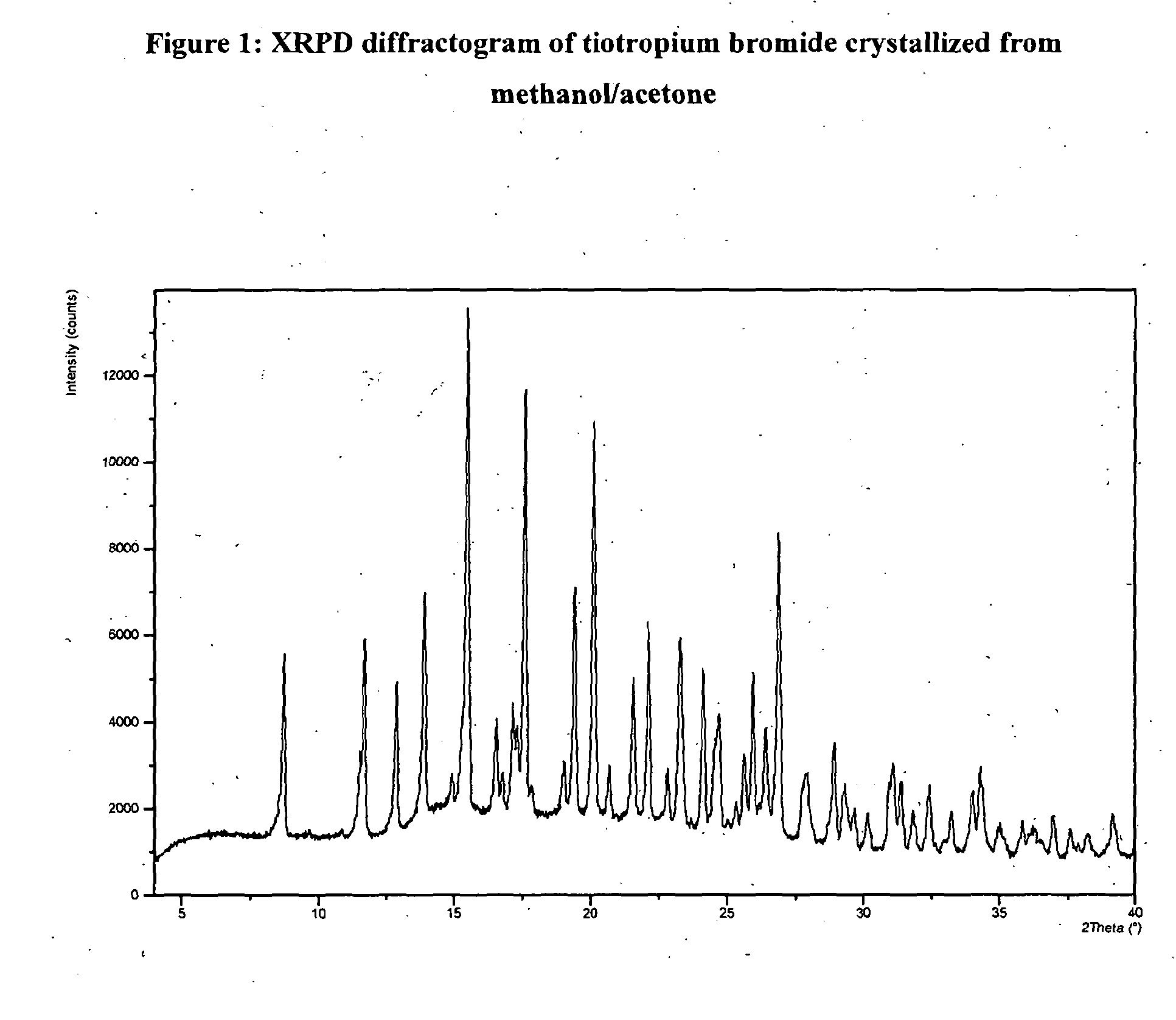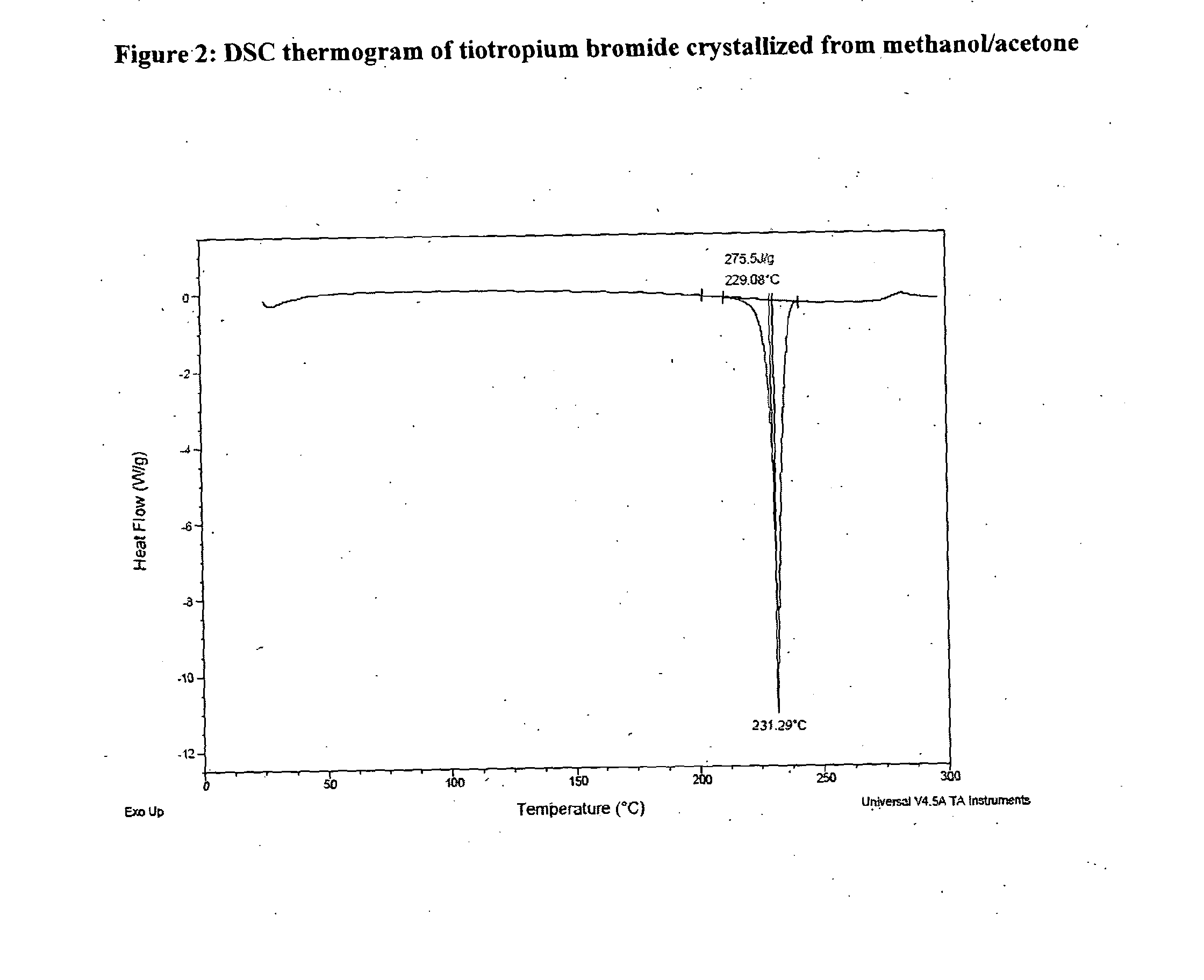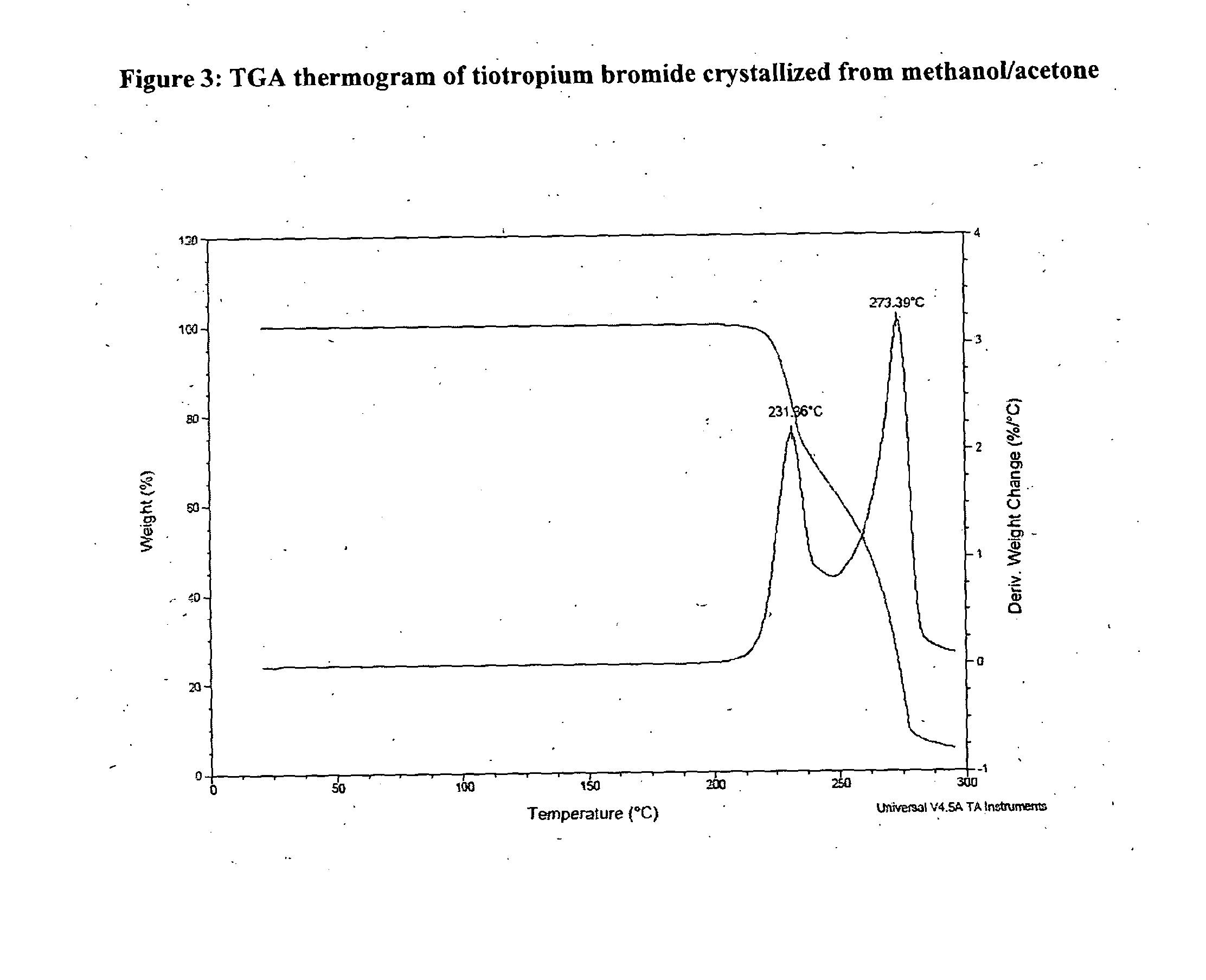Process for Preparing Tiotropium Bromide
a technology of tiotropium bromide and tiotropium bromide, which is applied in the field of process for the preparation of tiotropium bromide, can solve the problems of cumbersome procedures, use of scopine, and use of hazardous reagents, such as sodium metals,
- Summary
- Abstract
- Description
- Claims
- Application Information
AI Technical Summary
Benefits of technology
Problems solved by technology
Method used
Image
Examples
example 1
Preparation of N-demethyltiotropium
[0043]Scopine oxalate (47 g; 0.19 mol) was added to diethylamine (188 ml; 1.85 mol) followed by acetone (588 ml). The mixture was heated to a temperature between 40° C. and 45° C., was stirred at 40° C.-45° C. over 1 hour, was cooled to 20° C.-25° C. and filtered. Acetone (588 ml) was added to the filtered salts, the suspension was heated to 40° C.-45° C., was stirred at 40° C.-45° C. over 1 hour, was cooled to 20° C.-25° C. and filtered. The acetone filtered solution was combined with the filtered acetone / diethylamine solution. Acetone (588 ml) was added to the filtered salts, the mixture was heated to 40° C.-45° C., was stirred at 40° C.-45° C. over 1 hour, was cooled to 20° C.-25° C., was filtered and the salts were washed with acetone (188 ml). The solution and the wash were combined with the previously combined solutions.
[0044]To the resulting solution dimethylformamide (30 ml) was added and the mixture was concentrated under vacuum at tempera...
example 2
Preparation of Crude Tiotropium Bromide
[0045]N-demethyltiotropium (66 g; 0.17 mol) was dissolved in dimethylformamide (330 ml) and the solution was cooled to a temperature between 0° C. and 5° C. A solution of bromomethane in 2-methyltetrahydrofuran (132 ml; 0.72 mol) was added and the reaction mixture stirred overnight at 0° C.-5° C. The content of N-demethyltiotropium in the reaction mixture was 3.6% by HPLC. Then the reaction mixture was heated up to a temperature between 10° C. and 15° C. and stirred at this temperature range over 2 hours. The content of N-demethyltiotropium in the reaction mixture decreased to 1.7%. The reaction mixture was heated to a temperature between 25° C. and 30° C. and stirred at that temperature range over 1 hour. The content of N-demethyltiotropium in the reaction mixture decreased to 1.0% by HPLC. 2-Methyltetrahydrofuran (594 ml) was added to the reaction mixture previously cooled to 0° C.-5° C., the suspension was stirred over 1 hour while maintaini...
example 3
Recrystallization of Crude Tiotropium Bromide
[0046]Crude tiotropium bromide (79 g) was dissolved in methanol (3555 ml) at reflux temperature. The solution was filtered and the filter was washed with methanol. The filtered solution was concentrated under vacuum to a final volume of 474 ml. Acetone (79 ml) was added while maintaining the mixture at temperature between 35° C. and 45° C. The mixture was cooled to a temperature between 0° C. and −5° C. and was stirred at 0° C.-(−5° C.) over 2 hours. The product was filtered and was washed with acetone (63 ml) previously cooled to a temperature between −5° C. and 0° C. The wet product was dried under vacuum at 50° C. overnight and after was dried under vacuum at 111° C. over 8 hours. Anhydrous crystalline tiotropium bromide (62.91 g) exhibiting an XRPD difractogram matching that presented in FIG. 1 and with a purity of 99.87% by HPLC was obtained. The content of N-demethyltiotropium in the product obtained was 0.03% by HPLC.
PUM
| Property | Measurement | Unit |
|---|---|---|
| temperature | aaaaa | aaaaa |
| temperature | aaaaa | aaaaa |
| temperature | aaaaa | aaaaa |
Abstract
Description
Claims
Application Information
 Login to View More
Login to View More - R&D
- Intellectual Property
- Life Sciences
- Materials
- Tech Scout
- Unparalleled Data Quality
- Higher Quality Content
- 60% Fewer Hallucinations
Browse by: Latest US Patents, China's latest patents, Technical Efficacy Thesaurus, Application Domain, Technology Topic, Popular Technical Reports.
© 2025 PatSnap. All rights reserved.Legal|Privacy policy|Modern Slavery Act Transparency Statement|Sitemap|About US| Contact US: help@patsnap.com



